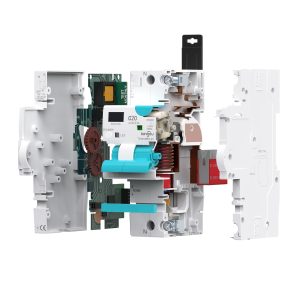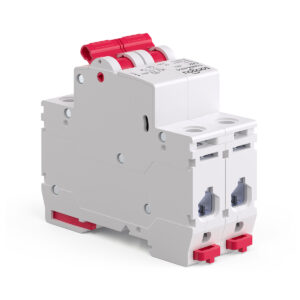
RCBO Trips at Night? Causes, Diagnosis, and Lasting Fixes
RCBO Trips at Night? Causes, Diagnosis, and Lasting Fixes Already know what an RCBO is? Great. This page skips the basics and focuses on nocturnal
More and more people are starting to DIY their houses, including replacing circuit breakers, switches, replacing light fixtures, etc., which saves a fortune, but creates new problems.
When working with home electrical systems, confusing a line wire with a load wire can lead to dangerous mistakes—from faulty outlets to fire hazards. Whether you’re installing a switch, troubleshooting a GFCI outlet, or upgrading your home’s wiring, knowing how to distinguish between these two is essential. This guide breaks down the difference between line and load wires, explains their roles in real-life scenarios, and provides actionable tips to identify them easily.

The line wire (often called the “hot” or “power” wire) delivers electricity from the utility source to your devices, switches, or outlets. Think of it as the “incoming” power supply.
For a professional electrician, identifying the line wire is a methodical process. Here are the primary methods they use:
Voltage Test: Use a multimeter—the line wire will show 120V (in standard North American homes).
Color Coding: Typically black (or red for 240V circuits), but always verify with a tester.
Position: In switches, the line wire is often connected to the bottom terminal (varies by region).

The load wire carries electricity away from a device to power downstream components. It’s the “outgoing” path that distributes energy to other fixtures or outlets.
In a light switch, the load wire connects to the light fixture, turning it on/off.
For GFCI outlets, the load terminals protect additional outlets downstream.
Identifying the load wire involves confirming its relationship to the line wire and the device.
No Voltage When Off: The load wire loses power when the switch or breaker is turned off.
Color Coding: Often red, blue, or another color distinct from the line wire (check local codes).
Downstream Connection: Follows the line wire in a circuit chain (e.g., from a GFCI to another outlet).
Feature | Line Wire | Load Wire |
Function | Brings power IN | Sends power OUT |
Voltage State | Always live (unless breaker off) | Live only when device is active |
GFCI Role | Connects to power source | Protects downstream outlets |
Common Colors | Black, red | Red, blue, or other |
Power vs Load on a Switch: The line wire brings power to the switch; the load wire carries it to the light.
GFCI Line vs Load: Miswiring a GFCI can disable its protection. Line terminals connect to the breaker; load terminals link to other outlets needing protection.
We know reversing Line and Load is wrong, but understanding why it’s dangerous reinforces the importance of getting it right. The consequences go beyond a simple malfunction.
This is the most critical wiring error a DIYer can make. A GFCI outlet has two sets of terminals for a reason: to create a “zone of protection.”
Correct Wiring: Power enters the LINE terminals, is monitored by the GFCI’s internal sensor, and then passes through to the LOAD terminals to protect any downstream outlets. If a ground fault occurs anywhere in this zone, the GFCI trips.
Incorrect Wiring (Reversed): When power is connected to the LOAD terminals, you are effectively “back-feeding” the device. The outlet itself will have power, but the incoming electricity has completely bypassed the safety sensor. The result is a GFCI outlet that works like a regular outlet, providing zero protection to itself or any outlets connected to it. It creates a false sense of security, which is the most dangerous situation of all.
Modern control devices like smart switches, timers, and dimmers are not simple mechanical switches; they are mini-computers.
They need a constant, stable power source to run their own electronics (Wi-Fi/Zigbee radios, microprocessors, etc.). This power is designed to be drawn from the LINE side.
They then process this power and send a controlled or modified output to the light fixture via the LOAD side.
If you reverse the connections, you starve the device’s “brain” of the power it needs to operate. The result is usually a device that is completely dead or behaves erratically.

The Line vs. Load principle is a universal standard that applies to a wide range of electrical devices beyond the common switch and outlet.
In commercial and industrial applications (and increasingly in smart homes for controlling heavy loads), contactors and relays are essential. They are always marked with specific input and output terminals:
·Line Side: Typically labeled L1, L2, L3. This is where the main power source from a circuit breaker is connected.
·Load Side: Typically labeled T1, T2, T3. This is where the equipment being controlled (e.g., a motor, a large heater, or a pump) is connected.
While a simple contactor might function if wired backwards, it is a major violation of global electrical standards. Every professional expects power to flow from L to T. Reversing this creates a serious safety hazard for future maintenance, as a technician might assume the “T” side is de-energized when it is, in fact, live.
——DIN-Rail Smart Breakers and Energy Meters
For modern smart homes and energy management systems, DIN-rail mounted devices like TONGOU’s smart circuit breakers or energy meters rely heavily on the correct Line/Load orientation.
·Line (Input): This is where the device draws power for its own smart functions (Wi-Fi, screen, measurement chip).
·Load (Output): This is the power that has been measured and is being switched.
Reversing the connection would be like trying to measure the flow of a river by placing the sensor downstream from the dam—the logic is broken, and the device will not function correctly.
Q1: Can I connect line and load wires backwards?
A: No—reversing them can cause devices to malfunction or create shock risks (e.g., a GFCI won’t trip properly).
Q2: What happens if I mix up line and load on a switch?
A: The switch may fail to control the fixture, or the circuit could short.
Q3: How do I identify line vs load without a multimeter?
A: Check labels in the electrical panel.
Look for markings on devices (e.g., “LINE” on GFCI terminals).

Label wires during installation to avoid confusion later.
Hire a licensed electrician for complex projects.
Prioritize safety: Double-check line vs load with a tester before touching wires.
Ultimately, understanding Line vs. Load is what separates a safe, professional installation from a risky gamble. It’s a fundamental principle that ensures safety devices function as designed and control systems operate reliably. By respecting this rule and choosing high-quality, clearly marked components, you are investing in the long-term safety and integrity of your home’s electrical system.
By mastering the difference between line and load wires, you’ll tackle DIY electrical projects safely and efficiently. Whether you’re installing a switch, outlet, or troubleshooting a circuit, this knowledge ensures your home’s electrical system runs smoothly—and safely.

RCBO Trips at Night? Causes, Diagnosis, and Lasting Fixes Already know what an RCBO is? Great. This page skips the basics and focuses on nocturnal

MCB B/C/D Curves in Practice: How Inrush Current Shapes Your Choice This guide assumes you already know what an MCB is. If you need a

SPD Coordination for Solar PV and EV Charging: Where to Place Type 1/2/3 Already know the difference between Type 1/2/3 and AC vs DC SPDs?

MCB vs MCCB: A Practical Guide to Icu/Ics and IEC 60898 vs 60947-2 This guide assumes you already know what a breaker is. If you

tongou was established in 1993 and is the trademark of Changyou Technology. We position ourselves as providers of intelligent product solutions for high and low voltage electrical systems, taking on solving customers’ pressures and challenges as our responsibility and creating value for them. We utilize intelligent products to serve global customers, making life smarter and more convenient to benefit your life.
Paidong Industrial Zone Qiligang,Yueqing City,Zhejiang province,China.
Sales: [email protected]
After-sales: [email protected]
© 2025 Changyou Technology. All Rights Reserved.

